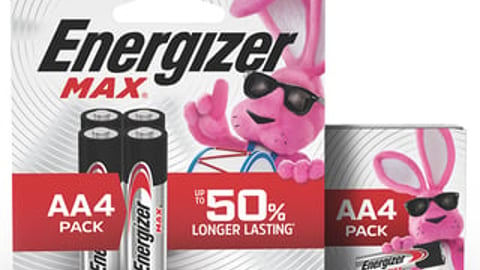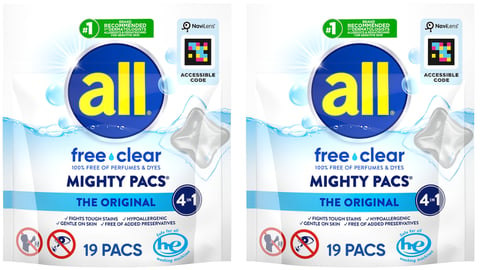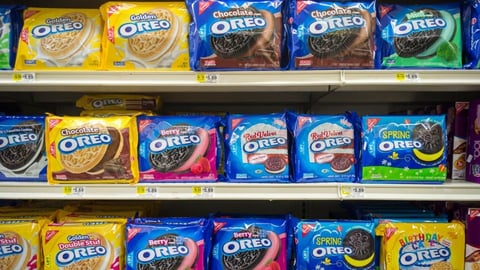How Kellogg’s Silo-Busting Is Fueling Packaging Innovation
The work Kellogg Company has done to break down internal silos is bearing fruit in the form of packaging innovation.
The company this week shared plans to manufacture four mainstay brands with NaviLens technology on their packaging in the United States, designed to make them more accessible to consumers who are blind or have low vision.
The front and sides of Kellogg’s Corn Flakes, Special K Original, Rice Krispies, and Crispix boxes will feature high-contrast colorful squares on a black background that can be detected and read by the NaviLens and NaviLens Go apps. Using the apps, consumers can locate the boxes from several feet away and navigate to them, as well as receive audible information in 36 languages regarding the product name, size, and nutritional information.
(NaviLens codes differ from QR codes in that users don't need to know exactly where a tag is to be able to read it, according to the tech company, and they can be read in motion and with an unfocused camera.)
The idea was the culmination of cross-functional work within the No. 45 publicly owned consumer goods organization. It was initially pitched by a member of Lesley Salmon’s team, the global CIO of Kellogg Company, who attended an event and learned that more than 2 million people in the U.K. live with sight loss and are unable to simply read information on packaging, Salmon tells CGT, which sparked an idea to add NaviLens technology to their own.
- See also: How Kellogg’s Defines Personalization
“She pitched the idea to me, [and] I brought it to the executive committee,” says Salmon. “We partnered with our packaging and design team, and within six months we launched the pilot.”
Kapable, Kellogg’s business employee resource group focused on developing a welcoming and inclusive environment, also played a part. Bethany Foor, the group’s co-chair and a member of Kellogg's corporate affairs team who has Usher syndrome, a leading cause of deaf-blindness, played a key role in its launch.
As the IT department partnered to ensure the right data was on the codes and was scaleable through automation, the concept went through a successful pilot and was made permanent this year. The company is now expanding its learnings to bring the technology to its U.S. packaging.
The company has also installed the NaviLens codes in its global HQ in Battle Creek, Mich., and has committed to incorporating them in all corporate facilities in the U.S. by the end of 2023.
Charisse Hughes, Kellogg’s chief brand and advanced analytics officer, noted in a statement that the company’s Better Days Promise ESG strategy includes the advancement of sustainable and equitable access to food.
“Living our purpose with a place at the table for everyone,” Salmon says. “NaviLens technology provides equal access to this information, making it truly inclusive.”
Kellogg joins such companies as Barilla and Haleon in making greater investments in packaging accessibility.





